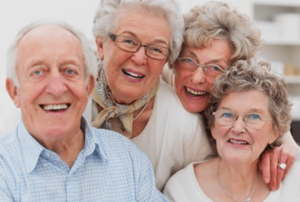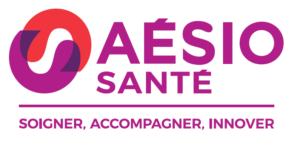As the majority of French people age, they want to remain in their own homes for as long as possible. It would be ideal to be able to benefit at home from services equivalent to those offered in a nursing home. AÉSIOSanté and other FNMF (Fédération Nationale de la Mutualité Française) mutualist players are developing a reinforced home support system. At AESIO SANTÉ, this device is called DAPHNÉ. Its objective is to offer an alternative to the EHPAD by bringing security, comfort, well-being, care, accompaniment… to the homes of people wishing to remain at home. What exactly is it about? What is at stake? What role does technology play?
Offering elderly people an alternative to a nursing home
To ensure that care and support in patients’ homes is technically and financially accessible. This is a project that makes sense at AESIO Santé is a non-profit company and an SSE (Social and Solidarity Economy) player.
It joined other FNMF mutualist members to develop a DRAD (Dispositif Renforcé d’Accompagnement à Domicile) project. In the end, 4 projects, with different configurations, were created. These are spread over 4 territories in both rural and “rural urban” areas.
The first challenge is to meet the growing demand for home care and to improve care. The idea is to rely on professionals in the home. For example, SIAD (Nursing Home Care), nursing home teams (from the AÉSIOgroup or partners). By relying on these networks of professionals, we avoid sending teams from the nursing hometo the home.
Nurses, care assistants and gerontological care assistants have a real role to play in this system.
Setting up in various territories: a challenge of medico-economic evaluation
Is it finally possible to offer the same services, at a lower cost, in a person’s home as in a nursing home?
This is the question that this experimentation must answer. This is also why it is an organisational, technological and also social innovation
AÉSIO Santé has not done things by halves. The mutual group has applied the most demanding specifications, those of national Article 51, to the 4 schemes. Indeed, it was essential to experiment in real conditions and to develop a coordination of face-to-face and remote services.
It is in this context that the function of Autonomy Coordinator, carried out by two people, has been set up. It is composed of a nurse coordinator experienced in SIAD and a gerontological care assistant (GCA). In addition, the team is supported by the organisation of the on-call duty of the SIAD nurses, liberal and/or hospital-based, (24/24h). This function is already operational for 3 out of 4 projects.
New technologies, combined with derogations in the provision of care and services, make it possible to better respond to needs. The Autonomy Coordinator is then able to carry out the following tasks with patients
- accompanied medical consultations at a distance,
- prepare the patient by taking vitals,
- to use connected medical devices,
- receive alerts or notifications sent by the remote monitoring systemHome automation and remote monitoring implemented by Telegrafik and InterMutuelle Assistance are changing the way we work. The professions of nurse and gerontological care assistant are valued. A real recognition for the home sector too!
In carrying out this experiment, AÉSIOSanté’s expectation is to demonstrate that :
- Medically and economically, it responds to the aspirations of people who want to stay in their homes,
- Economically, it may be of interest, particularly in terms of improving the quality of care.
The aim is to obtain recognition of the reinforced home support system for the services and adapted accommodation they offer to elderly and ageing people.
Technology at the heart of improving care at home
AÉSIOSanté’s “Innovation” department has established solid partnerships with public research centres. These include the École des Mines in St-Étienne, the IMT network and LIRM (Montpellier Robotics and Microelectronics Laboratory). In order to properly frame this DRAD system, it was necessary to be able to carry out usage tests. The MedTechlab has an intelligent flat equipped with sensors and analysers. Beyond modelling, it brings together health professionals, users, industrialists and engineers around the project.
The tests then continue in a real-time environment. Thus, they also allow for the evolution of products and services offered by start-ups and manufacturers. Most of them are carried out in establishments with optimal conditions.
In order to better understand and analyse living habits at home, AÉSIO Santé called on Telegrafik.
“Telegrafik seemed to us to be agile, expert, with solid references. The company has technical and scientific profiles that we feel are perfectly suited to working with professional teams,” said Guillaume Gardin, Director of Innovation, Research & Development and Clinical Research for AÉSIO Santé and Co-director of the MedTechLab laboratory.
Telegrafik was able to adapt to the project ecosystem. The company accompanied the mutual group from the expression of needs to the definition of the role of aggregator of digital solutions. This task has been entrusted to him. Thus, over the next three years, Telegrafik will link the various technological devices installed: remote monitoring, remote assistance, teleconsultation, etc




